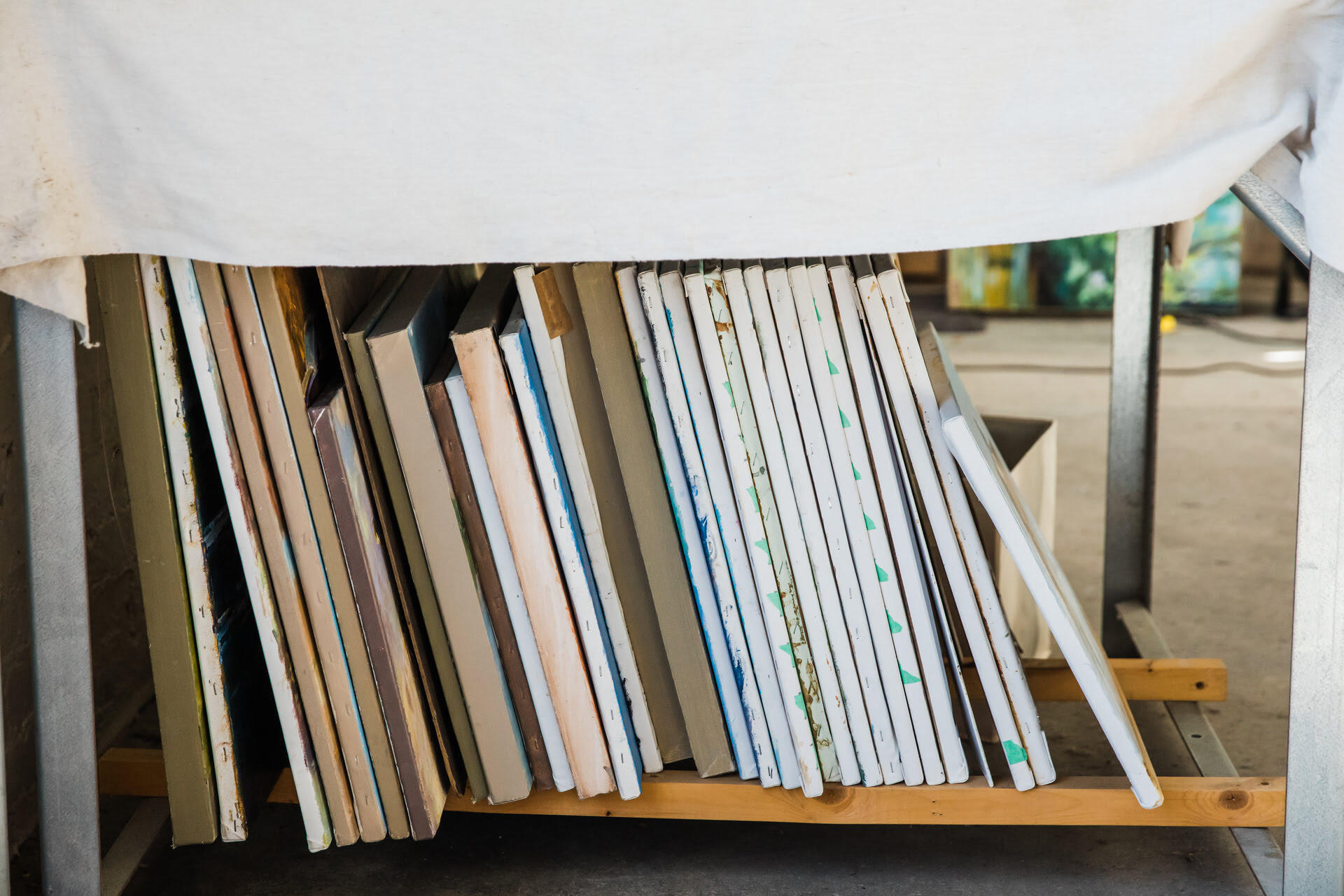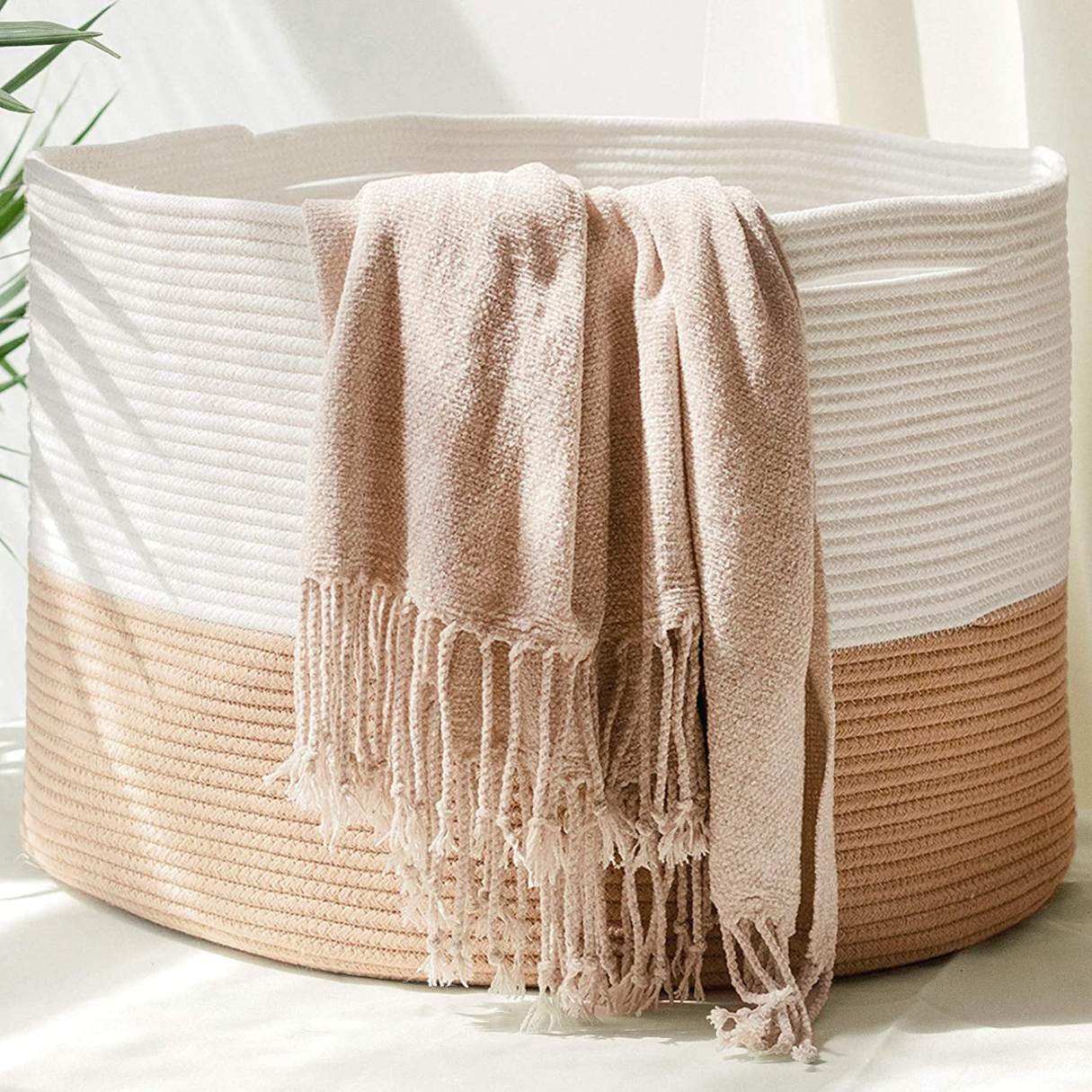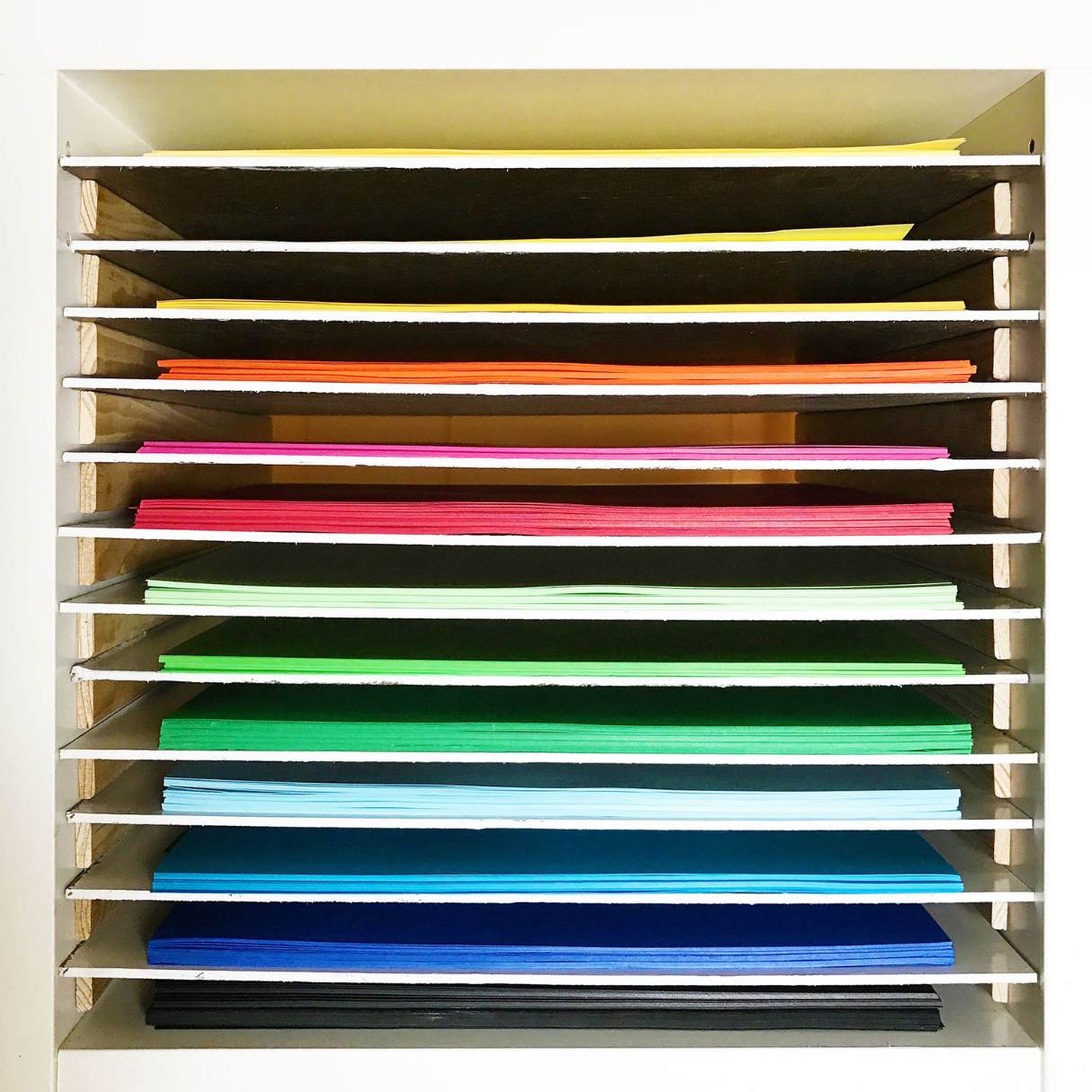

Articles
How To Store Large Paintings
Modified: March 19, 2024
Learn the best methods for properly storing large paintings in this informative article. Discover tips and techniques to preserve and protect your valuable art collection.
(Many of the links in this article redirect to a specific reviewed product. Your purchase of these products through affiliate links helps to generate commission for Storables.com, at no extra cost. Learn more)
Introduction
Storing large paintings can be a challenging task, especially if you want to preserve their beauty and value for years to come. Whether you are an art collector, an artist, or a gallery owner, it is crucial to properly store and protect these valuable pieces of art. This comprehensive guide will provide you with valuable tips and techniques on how to store large paintings effectively.
When it comes to storing large paintings, there are several factors to consider. The location, preparation of the storage area, handling and moving the paintings, choice of packing materials, proper wrapping and covering methods, and maintenance of the storage environment all play a crucial role in preserving the artwork’s integrity. By following these guidelines, you can ensure that your large paintings are protected from damage and deterioration.
Before we delve into the specifics of how to store large paintings, it’s important to note that temperature and humidity control are vital for preserving the artwork’s longevity. Ideally, paintings should be stored in an environment with temperature and humidity levels between 68 to 72 degrees Fahrenheit (20 to 22 degrees Celsius) and 40% to 50% relative humidity. Fluctuations in these levels can lead to irreversible damage, such as warping, cracking, or mold growth. Now, let’s dive into the details of storing large paintings.
Key Takeaways:
- Preserve large paintings by storing them in a cool, dry, and secure location, using proper packing materials, and maintaining optimal temperature and humidity levels to prevent damage and deterioration.
- Regularly inspect and clean stored paintings to identify and address any issues early, ensuring their long-term preservation and continued beauty for future generations to appreciate.
Read more: How To Store Large Canvas Paintings
Choosing the Right Location
The first step in storing large paintings is to choose the right location for their storage. The ideal storage area should be cool, dry, and free from direct sunlight. The following are some key considerations when selecting a suitable location:
- Temperature: As mentioned earlier, maintaining a consistent temperature is crucial for preserving the artwork. Extreme temperature fluctuations can cause the paint to expand and contract, leading to cracking or delamination. Avoid storing paintings in areas prone to temperature fluctuations, such as attics or basements.
- Humidity: High humidity can promote mold growth and cause the canvas to warp or become brittle over time. Similarly, low humidity levels can lead to drying and cracking. Choose a storage area with proper humidity control to maintain a stable environment.
- Lighting: Keep the paintings away from direct sunlight or harsh artificial lighting. Ultraviolet rays can fade the colors and degrade the artwork. If possible, use UV-filtering window films or blinds to protect the paintings from sunlight exposure.
- Security: Ensure that the storage area is secure and protected from theft or vandalism. Consider installing security cameras, alarms, or other measures to safeguard the artwork.
- Accessibility: While the storage area needs to be secure, it should also be easily accessible in case you need to retrieve or rearrange the paintings. Plan the layout of the storage area to allow for easy navigation.
Once you have identified a suitable location, it’s time to prepare the storage area to ensure the paintings remain safe and protected. Let’s explore the next step in the process: preparing the storage area.
Preparing the Storage Area
Before you start storing your large paintings, it’s essential to prepare the storage area to ensure the optimal conditions for preservation. Here are some steps to follow:
- Clean and dust: Thoroughly clean the storage area before placing any artwork inside. Remove any dust, dirt, or debris that may have accumulated. Use a soft cloth or a vacuum cleaner with a soft brush attachment to avoid scratching or damaging the surface of the paintings.
- Paint the walls and floors: Consider painting the walls and floors in a neutral color to create a clean and aesthetically pleasing environment. Avoid using bright or dark colors, as they can reflect or absorb light, potentially causing damage to the artwork.
- Install insulation: Depending on the location and climate, you may need to install insulation in the storage area to regulate temperature and humidity levels. Insulation helps maintain a stable environment and protects the artwork from extreme weather conditions.
- Control pests: Take preventive measures to keep pests, such as insects or rodents, out of the storage area. Seal any cracks or openings that could serve as entry points. Consider using pest control products or consulting with professionals for long-term pest prevention.
- Organize the space: Arrange the storage area in a well-organized manner to maximize space and ease of access. Use shelves, racks, or hanging systems to optimize storage capacity while keeping the paintings safely separated and protected.
- Add a dehumidifier and humidifier: Depending on your location and climate, you may need to install a dehumidifier or humidifier to maintain optimum humidity levels within the storage area. This helps prevent moisture-related issues such as mold growth or drying out of the paintings.
By taking these preparatory steps, you create a clean, controlled, and secure environment for storing your large paintings. The next crucial aspect is handling and moving the paintings. We will explore this topic in the following section.
Handling and Moving Large Paintings
Proper handling and movement of large paintings are essential to avoid any potential damage. Here are some guidelines to follow when handling and moving large paintings:
- Use clean hands and gloves: Before touching any artwork, make sure your hands are clean and dry. Consider wearing cotton or lint-free gloves to minimize contact with the painting’s surface. This helps prevent the transfer of oils, dirt, or moisture onto the artwork.
- Support the painting: Always support the artwork from the bottom and sides. Avoid placing pressure on the surface or corners, as this can cause dents, creases, or even tears. Use your hands or a soft, padded surface to support the artwork during movement.
- Enlist the help of others: For large and heavy paintings, it is best to have at least two people assist in the handling and moving process. This ensures the weight is evenly distributed and reduces the risk of accidents or dropping the artwork.
- Secure the artwork during transport: If you need to transport the paintings to a different location, make sure they are properly secured. Use protective padding, bubble wrap, or foam corners to provide cushioning and protect the artwork from any potential impact or movement during transit.
- Avoid extreme temperatures: During transportation, avoid exposing the artwork to extreme temperatures. Rapid temperature changes can cause the paint to expand or contract, leading to damage. If necessary, consider using climate-controlled vehicles or insulation blankets to protect the paintings.
- Be cautious with framing: If the paintings are framed, handle them with extra care. Avoid placing pressure on the corners or edges of the frame, as they can be fragile. If possible, remove the frame before moving the artwork to reduce the risk of damage.
By following these guidelines, you can ensure that your large paintings are handled and moved safely without any harm. The next step is to choose the right packing materials to provide adequate protection during storage. Let’s explore this in more detail.
Proper Packing Materials
When it comes to storing large paintings, using the proper packing materials is crucial to protect the artwork from potential damage. Here are some essential packing materials to consider:
- Acid-free paper: Use acid-free paper to create a protective layer between the painting and other packing materials. Place the paper directly on the surface of the artwork to prevent any direct contact with bubble wrap or other materials that might have a chemical reaction with the paint or canvas.
- Bubble wrap: Bubble wrap provides cushioning and protection against impact during storage or transportation. Wrap the painting with multiple layers of bubble wrap, ensuring that the bubbles face the painting’s surface for optimal protection.
- Corner protectors: Corner protectors are especially useful for framed paintings. These foam or cardboard corners fit snugly around the corners of the painting or frame, providing added protection against any accidental knocks or bumps.
- Cardboard or foam boards: Place a sturdy piece of cardboard or foam board on both sides of the wrapped painting to provide additional stability and protection. This helps prevent the artwork from bending or warping during storage or transport.
- Plastic wrap or shrink wrap: After wrapping the painting in bubble wrap, you can further secure it by wrapping it in plastic or shrink wrap. This adds an extra layer of protection and helps keep the packing material in place.
- Custom crates or art boxes: For extra protection, consider using custom crates or art boxes. These are specifically designed to fit the dimensions of your painting and provide secure storage. Custom crates or boxes offer maximum protection against impact, vibrations, and environmental factors.
It’s important to note that when using packing materials, avoid applying pressure directly on the canvas or any painted surface. Be gentle and ensure that the packing materials provide adequate cushioning without causing any unnecessary stress to the painting.
Now that you know the essential packing materials, the next step is to properly wrap and cover the large paintings. Let’s explore the techniques for wrapping and covering in the following section.
Read more: How To Store Large Comforters
Wrapping and Covering Paintings
Properly wrapping and covering your large paintings is crucial for protecting them from dust, moisture, and other potential risks during storage. Here are some techniques to consider:
- Begin with acid-free paper: Start by placing acid-free paper directly on the surface of the painting. This creates a protective barrier between the artwork and any other wrapping materials.
- Wrap with bubble wrap: Next, carefully wrap the painting with multiple layers of bubble wrap. Make sure the bubbles face inward, towards the painting’s surface, to provide cushioning and protection against impact.
- Secure the bubble wrap: Use tape or plastic wrap to secure the bubble wrap in place and prevent it from unraveling. Be cautious not to tape directly onto the painting’s surface, as it can cause damage upon removal.
- Wrap with acid-free plastic: After the bubble wrap, you can further protect the paintings by wrapping them in acid-free plastic. This additional layer of plastic acts as a moisture barrier, safeguarding the artwork from humidity or accidental spills.
- Label the packaging: It’s essential to clearly label each package with information such as the artist’s name, painting title, and storage date. This makes it easier to identify and locate specific paintings when needed without having to unwrap everything.
- Store in specialized art bags or boxes: If you have access to specialized art bags or boxes, consider placing the wrapped paintings inside for added protection. These bags or boxes are designed to provide a controlled environment, shielding the artwork from light, dust, and fluctuations in temperature and humidity.
Remember to handle the wrapped paintings with care to avoid any accidental damage. Store them in an upright or flat position based on the recommendations for your particular artwork, as we will discuss in the next sections.
Now that your paintings are wrapped and protected, it’s time to decide on the best storage method: storing them upright or flat. Let’s explore both options in the following sections.
When storing large paintings, use acid-free and archival quality materials such as acid-free tissue paper, bubble wrap, and sturdy cardboard to protect the artwork from damage. Store paintings vertically to prevent warping and keep them in a cool, dry, and dark environment to avoid fading and deterioration.
Storing Paintings Upright
Storing large paintings upright can be a suitable option, depending on the size, medium, and condition of the artwork. Here are some important considerations when storing paintings in an upright position:
- Choose a stable and secure location: Ensure that the area where you plan to store the paintings upright is stable and free from any potential hazards, such as excessive vibrations or the risk of falling objects.
- Use adjustable shelving: Invest in adjustable shelving units that can accommodate the varying sizes of your paintings. This allows you to customize the spacing between shelves to fit each artwork securely.
- Separate with padding: Place padding material, such as acid-free foam or bubble wrap, between each painting to provide cushioning and prevent any potential contact or rubbing that could damage the artworks.
- Support with vertical inserts: For stability, consider using vertical inserts, such as foam or cardboard, placed between the back of the painting and the shelf behind it. This helps prevent the artwork from tilting or leaning.
- Monitor for humidity: Regularly monitor the humidity levels in the storage area to ensure they remain within the recommended range. High humidity can cause mold growth, while low humidity can result in the drying out of the artwork.
- Protect from direct light: If the storage area has windows, ensure that the paintings are not exposed to direct sunlight. Ultraviolet rays can cause fading and deterioration of the artwork over time.
- Regularly inspect: Periodically check the paintings stored upright to ensure they are still stable and secure. Look for any signs of damage or shifting that may require adjustments or additional support.
Storing paintings upright can be a space-efficient option, especially when dealing with limited storage areas. However, it’s important to conduct regular inspections and make any necessary adjustments to ensure the safety and stability of the artworks. If storing paintings upright is not suitable for your specific artwork, consider the option of storing them flat, which we will explore next.
Storing Paintings Flat
Storing large paintings flat is a common method used to ensure the stability and preservation of the artwork. Here are some important considerations when storing paintings in a flat position:
- Choose a sturdy surface: Use a clean, sturdy surface such as a flat shelf or a dedicated storage rack designed for paintings. Make sure it is level and can support the weight and size of the artwork without bending or warping.
- Place protective padding: Before laying the artwork flat, place a layer of acid-free foam or a clean, soft archival material on the surface to provide a protective cushion for the painting.
- Minimize stacking: Avoid stacking multiple paintings on top of each other, as this can put excessive pressure on the lower artworks and increase the risk of damage. If you must stack paintings, use proper padding between each artwork to prevent contact and potential harm.
- Rotate the position: Every few months, rotate the position of the stored paintings to prevent prolonged pressure on one side. This helps ensure that the weight is evenly distributed and reduces the risk of warping or distortion.
- Monitor for temperature and humidity: Regularly check the storage area for temperature and humidity levels. Aim for stable conditions within the recommended ranges to preserve the integrity of the artwork.
- Protect against light: Keep the storage area away from direct sunlight or harsh artificial lighting. Ultraviolet rays can cause fading and damage to the paintings over time. Use curtains, blinds, or UV-filtering films on windows to limit exposure.
- Prevent contact with the surface: When storing paintings flat, ensure that they do not come into contact with any sharp or abrasive objects that could damage the surface. Avoid placing anything on top of the paintings that could cause pressure or indentation.
Storing paintings flat provides stable support and is particularly suitable for delicate or fragile artworks. It helps minimize the risk of damage that can occur over time when paintings are stored upright. Remember to periodically inspect the stored paintings and make any necessary adjustments or changes to maintain their condition.
Now that we have explored the options for storing paintings both upright and flat, let’s move on to the importance of monitoring and maintaining the storage environment.
Monitoring and Maintaining the Storage Environment
Monitoring and maintaining the storage environment is crucial for the long-term preservation of your large paintings. Here are some key considerations to ensure the optimal conditions for storing your artwork:
- Temperature and humidity: Regularly monitor and control the temperature and humidity levels in the storage area. Use a hygrometer and thermometer to gauge the conditions, and make adjustments as needed to maintain the recommended ranges. Fluctuations in temperature and humidity can cause warping, mold growth, and degradation of the artwork.
- Climate control systems: Consider installing a climate control system, such as a heating, ventilation, and air conditioning (HVAC) system, to regulate temperature and humidity. This helps create a stable environment for the stored paintings and minimizes the impact of external fluctuations.
- Avoid exposure to light: Protect the paintings from direct sunlight and harsh artificial lighting. Ultraviolet (UV) rays can fade the colors and damage the artwork over time. Use curtains, blinds, or UV-filtering films on windows to block out harmful UV rays.
- Ventilation: Ensure that the storage area has proper air circulation and ventilation. Stagnant air can lead to the buildup of moisture, mold, or mildew. Consider using fans or vents to maintain a fresh and well-ventilated storage environment.
- Regular inspections: Conduct regular inspections of the storage area to identify any signs of damage, pests, or environmental issues. Look for leaks, cracks, or any other factors that may compromise the integrity of the artwork.
- Keep the area clean: Regularly clean and dust the storage area to minimize the accumulation of dirt and debris. Use a soft cloth or a vacuum cleaner with a brush attachment to clean surfaces without causing any harm to the artwork.
- Documentation: Maintain detailed records of the stored paintings, including information such as artist name, title, date, condition reports, and any additional notes. Regularly update this documentation to track any changes or potential issues with the artworks.
By consistently monitoring and maintaining the storage environment, you can help ensure the longevity and preservation of your large paintings. Regular inspections, proper climate control, and cleanliness are essential to safeguarding the artwork from deterioration and damage.
Now that you have learned about monitoring and maintaining the storage environment, let’s discuss the importance of regular inspection and cleaning of the stored paintings.
Read also: 12 Best Large Paint Brushes For 2024
Regular Inspection and Cleaning
Regular inspection and cleaning are crucial steps in the maintenance and preservation of your stored paintings. By conducting routine inspections and cleaning sessions, you can identify any issues early on and prevent potential damage. Here are some guidelines to follow:
- Regular visual inspections: Schedule regular visual inspections of the stored paintings to check for any signs of damage, such as tears, cracks, or mold growth. Look for changes in color, texture, or condition that may indicate underlying issues.
- Check for pests: Inspect the storage area for any signs of pests, such as insects or rodents. Look for droppings, gnaw marks, or evidence of infestation. Take immediate action if any pests are detected to prevent damage to the artwork.
- Handle artwork with care during inspections: When conducting inspections, ensure that you handle the artwork with clean hands and use gloves if necessary. Avoid applying pressure or touching the surface directly to prevent any accidental damage.
- Address any issues promptly: If you notice any damage, deterioration, or potential issues during the inspection, take immediate action. Consult with a professional conservator or art specialist for guidance on how to address the problem effectively and prevent further damage.
- Cleaning techniques: Use gentle cleaning techniques when required. Dust the artwork with a soft, clean brush or a microfiber cloth to remove any surface dirt or debris. Avoid using water or cleaning solutions directly on the artwork unless recommended by a professional.
- Document changes and repairs: Update your documentation with any changes or repairs made to the artworks. Keep records of the cleaning and inspection dates, any findings, and the actions taken. This helps track the artwork’s condition over time and aids in its overall management.
- Consider professional cleaning: For valuable or delicate artworks, it may be advisable to enlist the services of a professional art conservator for periodic deep cleaning. They have the expertise and knowledge to safely and effectively clean the artwork without causing any damage.
Regular inspection and cleaning play integral roles in the ongoing care and maintenance of your stored paintings. By being proactive and attentive to the condition of the artworks, you can preserve their beauty and value for years to come.
Now that you understand the importance of regular inspection and cleaning, let’s conclude this guide.
Conclusion
Storing large paintings requires careful planning and attention to detail in order to preserve their beauty and value over time. By following the guidelines and techniques outlined in this comprehensive guide, you can ensure the safe storage and protection of your valuable artworks.
Choosing the right location for the storage area and preparing it properly are crucial steps in maintaining the ideal conditions for the paintings. Proper handling and movement of the artworks help prevent any potential damage during transportation or repositioning.
Using the appropriate packing materials, such as acid-free paper, bubble wrap, and corner protectors, ensures that the paintings are well-protected and shielded from any potential harm. Wrapping and covering the artworks with care further secures them against dust, moisture, and light exposure.
Deciding whether to store the paintings upright or flat depends on the specific artwork and its needs. Both methods have their benefits, but it’s essential to provide appropriate support and regular inspections to maintain their stability.
Maintaining the storage environment is critical for the long-term preservation of the paintings. Monitoring temperature, humidity, and lighting and ensuring proper ventilation and cleanliness contribute to the overall health of the artwork.
Regular inspections and cleaning sessions help identify and address any issues early on, preventing further damage or deterioration. Being proactive in documenting the conditions and any necessary repairs aids in the proper management of the artworks.
By following these guidelines and incorporating them into your storage routine, you can ensure that your large paintings are stored in a safe and optimal environment. This will help preserve their integrity, beauty, and value for future generations to appreciate and enjoy.
Remember, if you have valuable or delicate artworks, it’s always wise to consult with a professional art conservator for additional advice and guidance. With proper care and attention, your stored paintings can continue to be cherished and admired for years to come.
Frequently Asked Questions about How To Store Large Paintings
Was this page helpful?
At Storables.com, we guarantee accurate and reliable information. Our content, validated by Expert Board Contributors, is crafted following stringent Editorial Policies. We're committed to providing you with well-researched, expert-backed insights for all your informational needs.














0 thoughts on “How To Store Large Paintings”